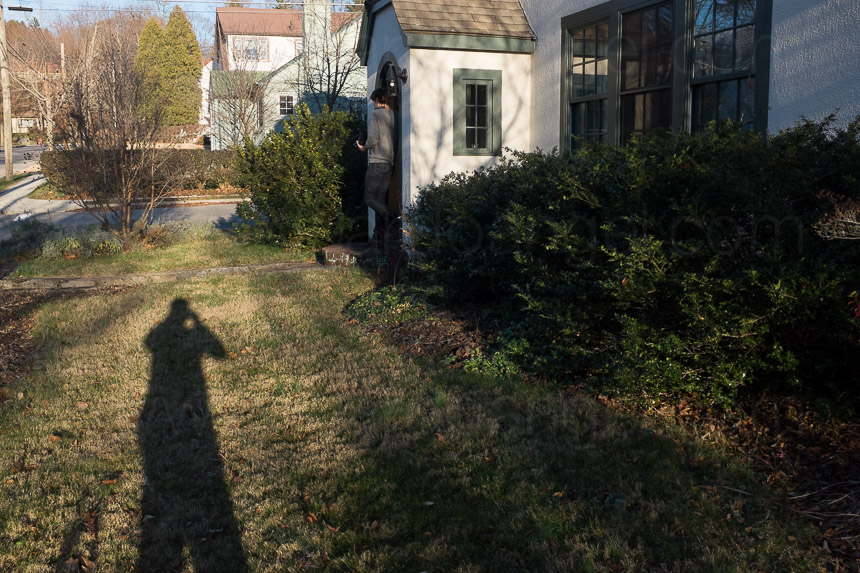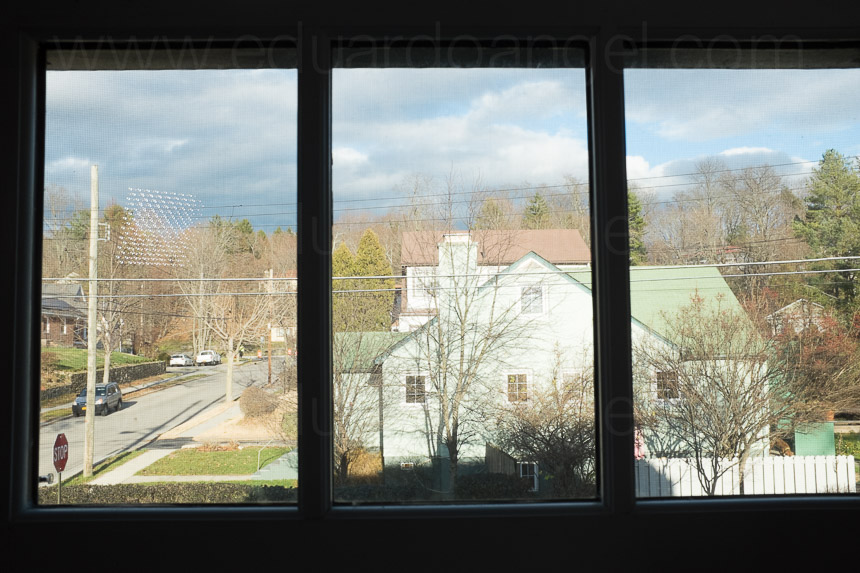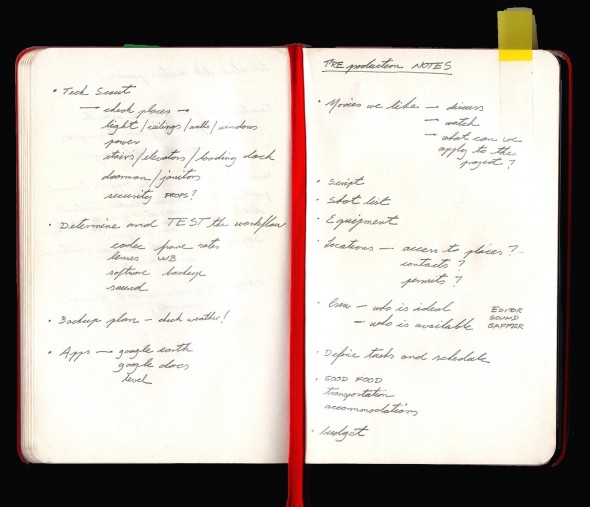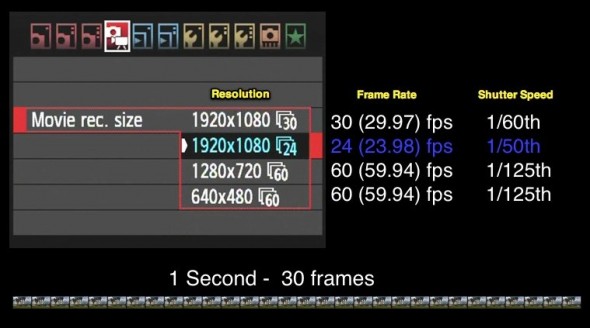Video
NAB 2019 Handouts
As I mentioned on a previous article, I’ll be presenting several workshops at the upcoming NAB Show in Las Vegas.
The handouts for the main three sessions are out of the oven, and we are making them available for free to anyone interested.

We also added two new onlines courses, and updated our two most popular courses:
- Filmmaking Essentials for Photographers (here’s the online course, and here’s the book)
- The 41 Essential Items for Hybrid Productions


There are several mini tutorials (under 90 seconds in length), and ALL are available for free.


Take a look, I’m sure there’s something that will fulfill your needs.
Video
Cool Podcast Interview.
Street photographer Valérie Jardin has a Podcast called “Hit The Streets.”
We had a really nice conversation about the skills necessary to go from still to motion, and why photographers should add filmmaking skills to their arsenal. The conversation is now available as the latest episode of “Hit The Streets.”
Video

Understanding Steven Soderbergh. Part 2.
On my previous post I wrote about Steven Soderbergh’s professional life. The goal was to give some context on why I consider him a leading force in the future of filmmaking, regardless the quality or financial success of his most recent movies.
I started paying close attention to how Steven Soderbergh works around 2014 when he released the Cinemax show The Knick.
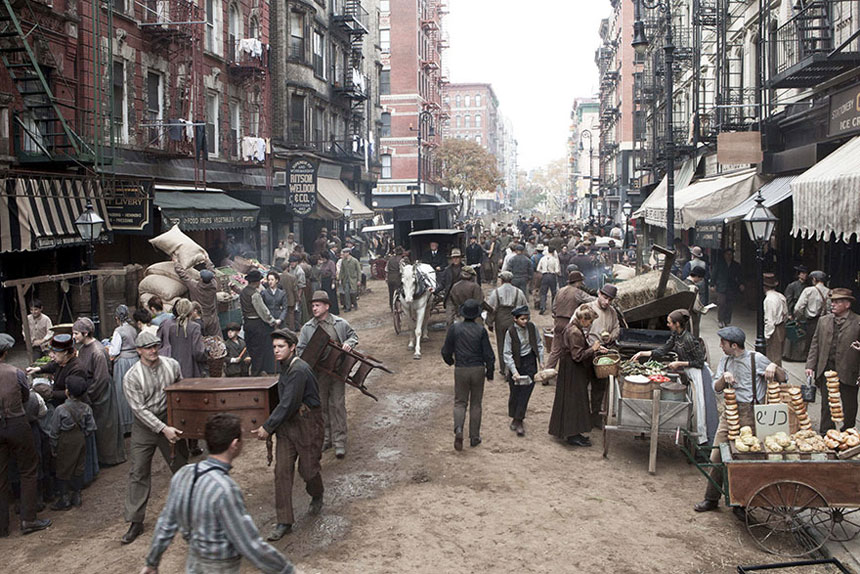
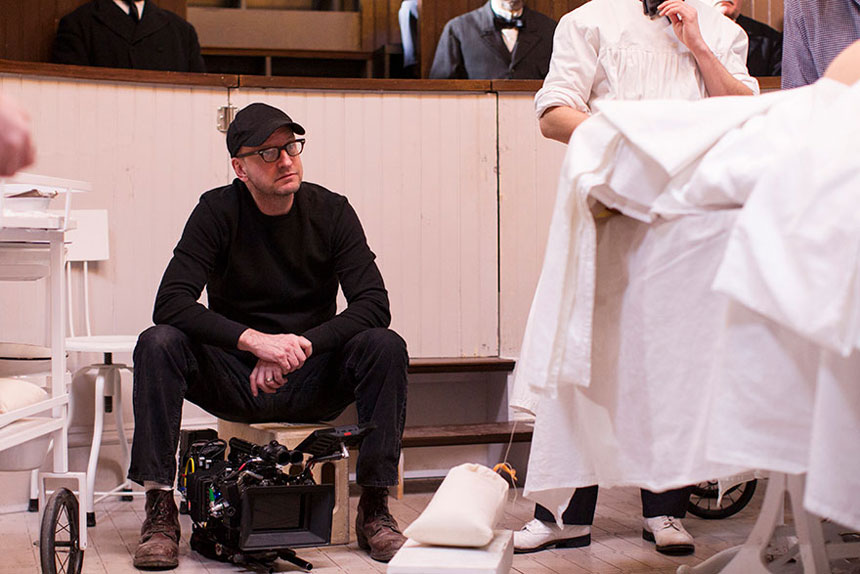
On this post (and the next one) I’ll share everything I know on Soderbergh’s production schedule, using the iPhone to shoot Unsane and High Flying Bird, his approach to scriptwriting, and why he prefers working with skeleton crews.
The huge advantages of small crews.
Let’s start with that last part. By now you know I prefer to shoot with the smallest possible crew and the least amount of gear. So much so that I recently started a new website called the 1 Person Crew. There I shared why Robert Rodriguez is also one of my heroes. But here’s Steven Soderbergh’s take on the advantages of working lean and mean:
“One of my favorite shooting days on High Flying Bird was when we did the opening scene at The Standard hotel. We took a break, and then we started walking downtown New York with a crew of four or five people, and André. I’m walking and I’ll go, “Okay, stop, we’ll put the camera here.” Shoot that, walk, walk, walk, okay, we’re stopping here. It was really fun. It took us two hours to walk and shoot our way down to the World Trade Center.”
Steven Soderbergh
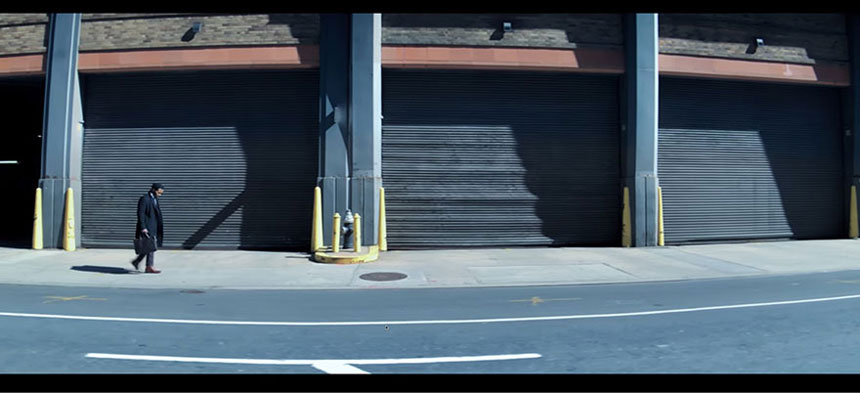
Steven Soderbergh’s iPhone
“‘I don’t want to wait on the tool, the tool should wait on me.”
Steven Soderbergh quoting Orson Welles.
High Flying Bird and Soderbergh’s previous movie Unsane were shot on an Apple iPhone. It’s all about size, and the ability to get the shot he wants in tight quarters. In Unsane when space got particularly tight, Soderbergh would just tape the iPhone to the wall to get the frame he wanted.
The visuals are harsh and uncompromising, but Soderbergh sees that as part of the appeal. Unsane is a great worst-nightmare movie, a tense piece of low-budget auteurship that plops the viewer into an absurd scenario and then ratchets up the tension for the next 90 minutes.”
The Atlantic
For “High Flying Bird” Soderbergh originally wanted to shoot anamorphic, and have a much cleaner, slicker look. But the challenge was gaining access to real-life locations that embodied an affluent world. For a small, nimble production, the advantages of the iPhone outweighed the image fidelity of an ARRI or RED cameras that cost a hundred times more.
“The iPhone seemed to me a pretty natural fit for that approach. It still is, in my mind, in terms of the scale of it, the speed that was necessary to execute it, in the time we had allotted.”
Steven Soderbergh
On High Flying Bird there’s a shot where three actors are walking down an office corridor. As all three break in different directions the camera follows one actor into an office, and then retreats.

A 350-pounds dolly? Screw that! Instead, Soderbergh sat in a wheelchair, holding the iPhone on this tiny Gimbal mimicking a mini crane movement.
“Using a more traditional approach with normal-size cameras would have been extremely difficult, if not impossible. To get the lens where I wanted, to be moving in certain way or have the camera reach multiple destinations without either somebody getting hurt, or the shot being compromised because of the size of the equipment. A normal size dolly, weighs 350 pounds. Moving quickly can be dangerous and somebody could get hurt. And we could have been there for hours.”
Steven Soderbergh
“I get very frustrated when it takes a long time to execute it. Like, as soon as I feel it, I want to shoot it. And so, that’s one of the biggest benefits of this method — the time from the idea to seeing an iteration of it is incredibly short, like, a minute, like, maybe less. For me, the energy that that creates on set, and I think on screen, is huge.”
Steven Soderbergh
Soderbergh’s lighting package (shooting with the iPhone or proper cinema cameras) has been stripped down to a 12-inch by 12-inch LED panel (like this) in recent years. The look can be more evocative of a filmmaking student than an Oscar-winning director with 30 features under his belt. But this is as much an aesthetic as a practical decision, especially since 2000 when Soderbergh took over the cinematographer’s role on his films.
From Script to Screen.
The Knick’s original script called for 10 episodes. Instead of working on complete episodes one at a time Soderbergh turned the script into a “10-hour movie” shooting the first season in 73 days. In other words, Soderbergh shoot eight to nine script pages a day, double the typical rate for a TV drama. This wasn’t a new approach for him. Back in 2003 each episode for K Street was plotted, scripted, shot, cut, and broadcast in five days. Same exact story for the 2017 Netflix series Godless.
“The original script for Godless was 175 pages. Instead of chopping one of its limbs off, we thought “why don’t we turn this into a series?” So we approached Netflix with the idea and they said “Go. You’re starting tomorrow. Netflix ability to move that quickly and that definitively is their biggest advantage.”
Steven Soderbergh
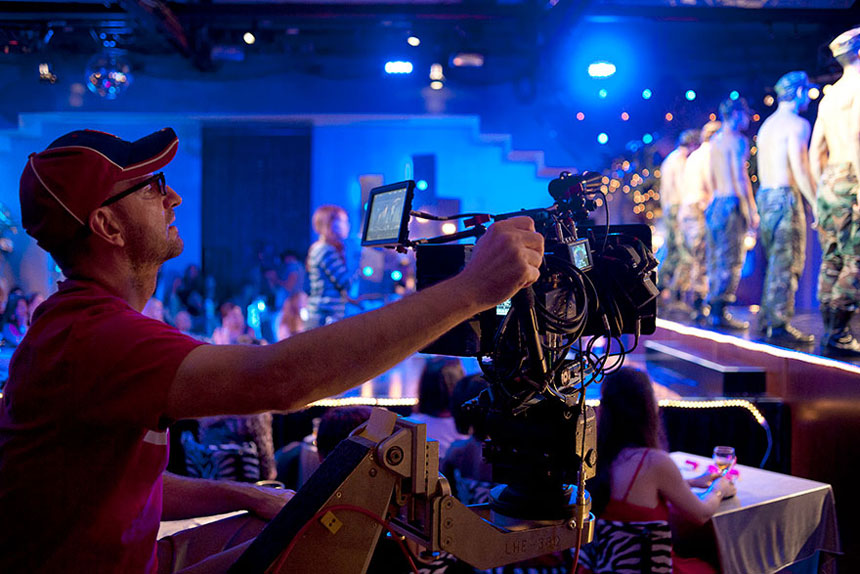
On my next post I’ll share the gear, schedule and workflow Soderbergh used the the Cinemax series The Knick, and why I believe his production approach will be the way how many TV shows and features will be produced from now on.
Video

Understanding Steven Soderbergh. Part 1.
Today I’d like to share a bit about Steven Soderbergh’s professional life, and why have I’ve been following him for years. On two upcoming posts I’ll share everything I know about his working methods, including his shooting schedule and preferred workflow and gear. Cool? Let’s go!
Thirty years ago Steven Soderbergh became the pioneer of independent cinema with his first movie Sex, Lies and Videotape. Today he leads the future of filmmaking and might be even shaping the future of the NBA.
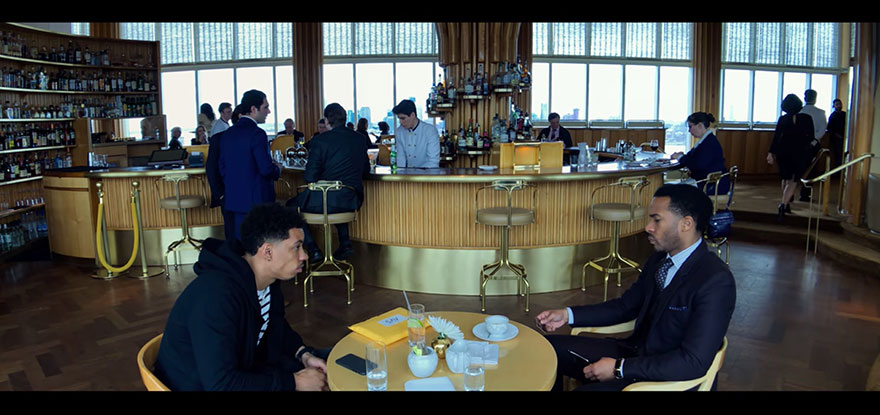
Last week, Steven Soderbergh’s latest film “High Flying Bird” launched globally on Netflix. I waited for weeks to watch it and… let’s say it wasn’t exactly what I was expecting.
To be fair, I don’t follow professional sports, and the film is about an NBA agent and a rising basketball star who try to change the business of professional basketball. With only 72 hours to pull off a daring plan, they try to outmaneuver the other players with a strategy that could change the game forever. The outcome raises questions of who owns , and who should own, the game.
Interestingly, the characters in “High Flying Bird” imagine what could happen if pro players took their careers into their own hands using the power of the internet. Well, that is EXACTLY what Steven Soderbergh has been doing with the Hollywood studio system for a very long time.
For example, back in 2005 (before anyone thought is was possible) Soderbergh released Bubble simultaneously in theaters and as a home release. In 2009 he tried the same approach with The Girlfriend Experience with adult film star Sasha Grey.
In 2017 with Logan Lucky, Soderbergh
“crafted a project that bypassed traditional Hollywood production and marketing formulas, targeted his advertising to find the right audience, edited trailers himself, and ignored the usual branding paradigms.”
The Atlantic
Who is Steven Soderbergh?
He is the guy who once directed Out of Sight, The Limey, Erin Brockovich, Traffic, and Ocean’s Eleven, all within a three-year period.
Many people forget (or don’t know) that in 2000, Soderbergh received two Oscar nominations for Best Picture, and won Best Director for Traffic.
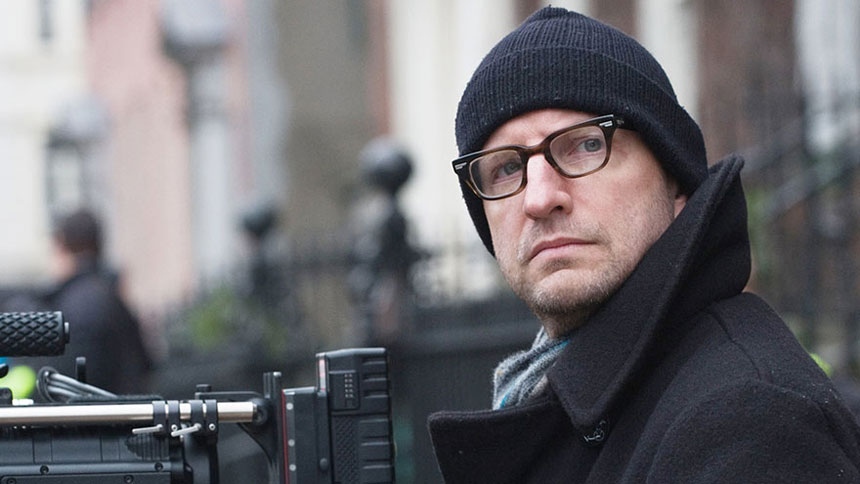
As of right this second, Soderbergh has 42 credits as director, 49 as producer, 28 as cinematographer and 23 as editor. He has 28 features and over 30 hours of TV series. His directorial work alone have grossed over US$2.2 billion worldwide.
“Soderbergh has worked in every genre and at all levels of the studio system. He directed glossy franchise entertainment (Ocean’s Eleven), Oscar-winning successes (Traffic and Erin Brockovich), hard-boiled noirs (Out of Sight and The Limey), and low-budget experiments (Full Frontal, Schizopolis, and The Girlfriend Experience).”
The Atlantic
In other words, Steven Soderbergh is not a human from planet earth.
Steven Soderbergh’s Oscars Acceptance Speech.
“There are a lot of people to thank. Rather than thank some of them publicly, I think I’ll thank all of them privately. What I want to say is — I want to thank anyone who spends part of their day creating. I don’t care if it’s a book, a film, a painting, a dance, a piece of theater, a piece of music… Anybody who spends part of their day sharing their experience with us. I think this world would be unlivable without art, and I thank you. That includes the Academy. That includes my fellow nominees here tonight. Thank you for inspiring me. Thank you for this.”
Steven Soderbergh
That’s a powerful message. So powerful that the Academy Awards recently held it as “the ideal of an Oscar speech” probably because it is short and to the point.
The real-life story behind the speech is fascinating:
“I had nothing prepared because I knew I wasn’t going to win. I figured Ridley Scott, Ang Lee, or Stephen Daldry would win. So I was hitting the bar pretty hard, having a great night, feeling super relaxed because I didn’t have to get up there.”
Steven Soderbergh
So the combination of lots of alcohol and lack of preparation worked well that night. Going back to Soderbergh’s professional life,
On Marketing Logan Lucky.
“Logan Lucky was released on August because historically, it has been a good time to release something of quality. There’s typically a dead zone before Labor Day. The big summer movies have played out, and there are three weeks with some breathing room. You just need a lot of marketing money, more than we had. I was aware it might not work. I learned a lot, and it was absolutely a worthwhile thing to do, to try and create an avenue for projects that don’t fall in any of these tiers or to want to have creative control over everything, with more financial transparency.”
Steven Soderbergh
On my next two post the plan is to share everything I know on Soderbergh’s production schedule, his approach to scriptwriting, and why he prefers working with skeleton crews.
Video
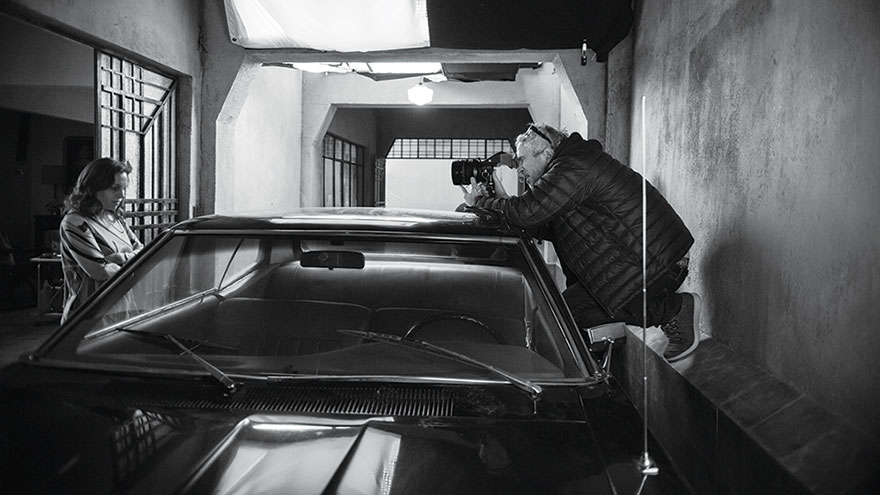
The Sound of Roma.
I started thinking about a “Roma” blog post a few minutes into the movie.
Why Black and White? What do those almost endless pans mean? How similar or different is the composition compared to “Gravity“? What’s the meaning of “water” for Cuaron?

But as I started reading more about the movie, which by the way was written, directed, produced, shot, and co-edited by Alfonso Cuarón, my attention quickly drifted to the film’s sound design.
First things first.
I am assuming you know about Roma. If you don’t, here’s the executive version. Roma is a semi-autobiographical take on Cuarón’s childhood in Mexico City in the early 70’s.
So far Roma has won the Golden Lion in Venice, received 10 nominations at the 91st Academy Awards—including Best Picture, Best Foreign Language Film, Best Director, Best Actress and Best Supporting Actress. It is tied with The Favourite as the most-nominated film, and with Crouching Tiger, Hidden Dragon (2000) for the most Oscar nominations ever received by a film not in the English language.
It also won Best Director and Best Foreign Language Film at the 76th Golden Globe Awards, Best Director and Best Picture at the 24th Critics’ Choice Awards, and at the 72nd British Academy Film Awards won Best Film, Best Film Not in the English Language, Best Direction and Best Cinematography.
UPDATE 20190225: Roma delivered Netflix its highest Oscars prestige yet, contending in 10 Academy Award categories, and wining three: Best Director, Foreign Language Film and Best Cinematography. Alfonso Cuaron gave Mexico its first foreign language film Oscar.

Sound Design.
Now, back to sound design. So it happens, the sound supervisor and re-recording mixer was the Academy Award-winning Skip Lievsay, who also worked on “Gravity“, “Children of Men“, “Y Tu Mama Tambien” and all 18 movies by the Cohen Brothers.
The most informative resource was this interview with Skip Lievsay on YouTube. Here are 3 of my favorite sections:
The full interview.
I highly recommend listening to the complete interview to learn:
- How not having a musical score keeps the audience guessing what will happen next
- Why it was important to Cuarón to have the dialog emanate not just from the screen channels but from all around the audience
- The stunning five-day loop group recording session with 350 actors
- How the final mix of the film took 10 weeks, 7 days a week, 12 hours a day.… wow…..
The technical stuff.
Filmmaker Magazine has another great article on Roma’s sound design. It’s a bit technical but enjoyable.
“In Atmos, we were able to use the x-axis and the y-axis as well as the z-axis. That’s the trick — using the z-axis in terms of extra reverbs or spatial ability.”
Filmmaker Magazine
A (much) deeper interpretation.
If you are interested in a more esoteric approach to Roma, pay close attention to these comments by another maestro, Guillermo del Toro.
Get 60 days FREE of the best music for filmmakers.
Get 30 days FREE of the best collaboration software.
Video
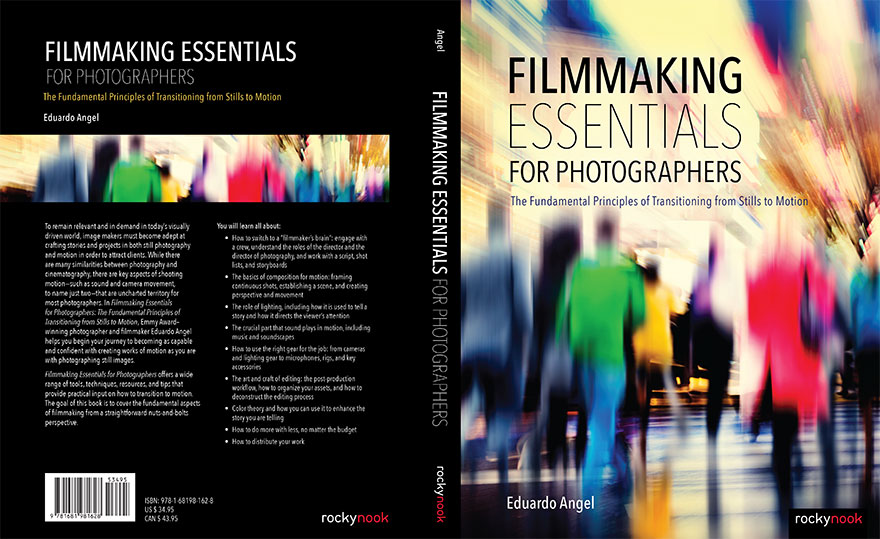
Filmmaking Essentials for Photographers (PDF Edition)
To remain relevant in today’s visually driven world, image makers must master photography and video.
While there are many similarities between photography and video, there are key aspects of shooting motion—such as sound and camera movement, to name just two—that are uncharted territory for most photographers. In Filmmaking Essentials for Photographers: The Fundamental Principles of Transitioning from Stills to Motion, Emmy Award–winning photographer and filmmaker Eduardo Angel helps you begin your journey into as confidently as you are with shooting stills.
Filmmaking Essentials for Photographers covers a wide range of tools, techniques, resources, and practical tips on how to transition to video.
Even though this is not an in-depth book on editing, directing, or even lighting, we cover the fundamental aspects of filmmaking from a straightforward nuts-and-bolts perspective. You will learn all about:
- How to switch to a “filmmaker’s brain”
- Truly understand the director’s and director of photography’s roles
- How to work with scripts, shot lists, and storyboards
- The basics of composition for motion: establishing a scene, creating perspective and moving the camera
- The role of lighting to enhance stories and direct the viewer’s attention
- The crucial role of sound in motion
- How to use the right gear from cameras and lighting gear to mics, rigs, and key accessories
- The art and craft of editing
- Post-production workflows and how to organize your assets
- Color theory and how you can use it to enhance the story you are telling
- Lastly, how to do more with less—no matter the budget
Increasingly, opportunities come to those who can create multimedia content.
The book covers some of the new business opportunities that will open up to you. With your newfound skills in motion you will tackle educational content, interviews, short films, stock footage, and commercials.
Filmmaking Essentials is now ranked among Amazon’s top 50 books for photographers and filmmakers!
Video

How to Pack Light.
A substantial challenge within small-crew, low-budget productions is how to travel as light as possible, but still carry a full production and post-production setup that is literally on your back.
In this FREE half-hour lecture I share my most valuable packing tips, the gear you can not leave behind, and even how to approach subjects in foreign countries.
This presentation was recorded live at NAB 2016 Post|Production World, the leading training event for content creators and designers.
Duration: 23 minutes
A complementary companion PDF with valuable information is also included.
Video

Understanding and Breaking Composition Rules.
Cinematic composition is one of the least understood yet most important aspects of video. Like good storytelling, in order to achieve good compositions you have to make every detail count and keep the audience engaged in your story.
Beginning with basics such as shot size, depth of field, and the rule of thirds, in this seminar we explore how to establish a scene, play with perspective and movement, and incorporate some of the most common shot types, including close-ups and group shots.
“Understanding and Breaking Composition Rules” was recorded live at NAB 2016 Post|Production World, the leading training event for content creators and designers.
Duration: 56 minutes
A complementary companion PDF with valuable information is also included.
Video
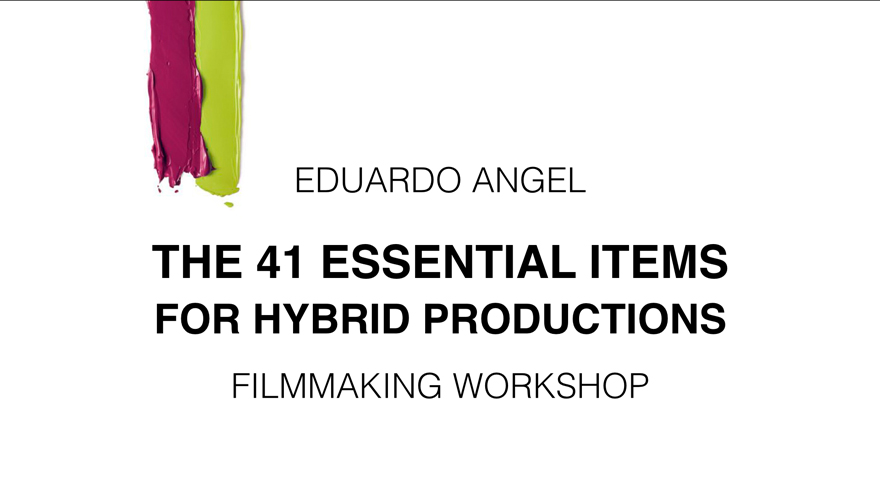
The 41 Essential Items for Hybrid Productions.
Hybrid productions where one person is required to be the photographer, filmmaker, sound engineer, producer, and even editor are increasingly popular. Getting stellar content and capturing the shots that really matter is essential, as there are no second chances.
This presentation was recorded live at NAB 2016 Post|Production World, the leading training event for content creators and designers.
Duration: 68 minutes
Two companion PDFs with valuable information are also included.
Video
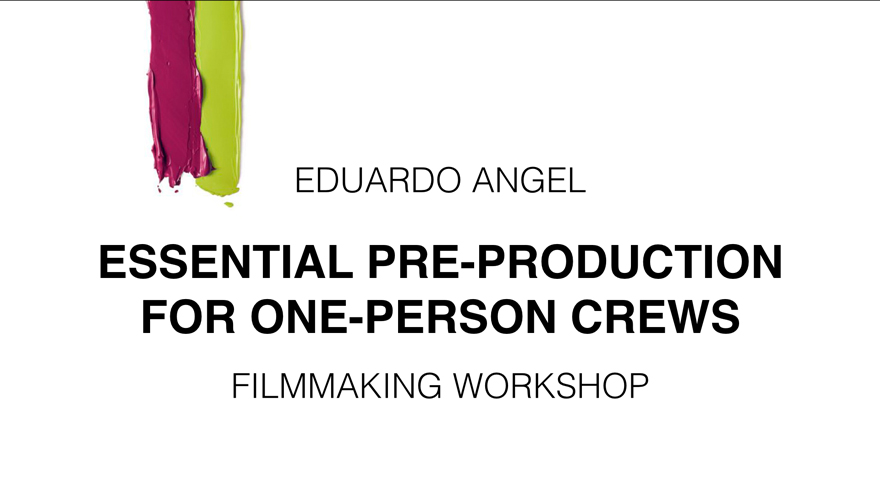
Essential Pre-Production for One-Person Crews.
Not spending enough time and resources in pre-production usually translates into more mistakes, delays and over costs during production and post.
In this hour-long seminar we cover how to work on a shoestring budget without compromising the integrity of the story and I shares insights on the most essential steps required even before arriving at each location. From pre-shooting and rough editing, to the mobile apps that stand out from the pack, and even backup strategies, there’s a lot of useful info packed on these seminars.
I truly believe anyone involved in run and gun scenarios like weddings, events, corporate, documentary, red carpet premieres, product launches, sporting events, and even video podcasts will benefit from the topics covered.
This presentation was recorded live at NAB 2016 Post|Production World, the leading training event for content creators and designers.
Duration: 68 minutes
A companion PDF is included
Video
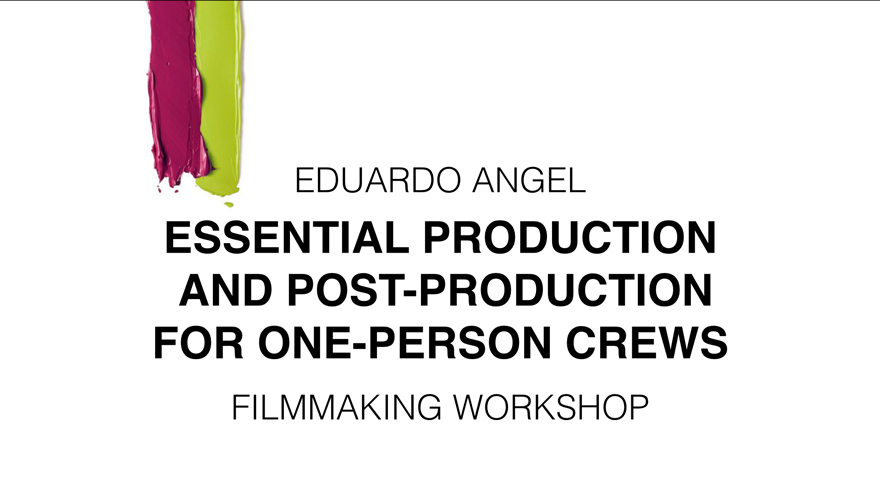
Essential Production and Post-Production for One-Person Crews.
These presentations were recorded live at NAB 2016 Post|Production World, the leading training event for content creators and designers.
Duration: 58 minutes
Two companion PDFs with valuable information are also included.
Video

Film Anatomy. Location Scouting.
Last week was unseasonably warm and beautiful, and we went to scout one of our top locations. It was only 50 miles from my place in Brooklyn, but with New York’s traffic it took over 2 hours to get there. As a rule of thumb, when scheduling our shoots, we DOUBLE the estimated travel time by Google Maps. The worst scenario is arriving early, which often leads to a shorter than expected day or having a bit more time to set up, neither too bad if you ask me.
For our short film we essentially need three locations, all interiors. Why? Well, because we’ll be shooting in New York the middle of January so the chances that the weather will be as nice as last week are rather slim.
The house we scouted is almost perfect. It provides two of the three locations we are looking for, and we might be able to fake the third one through some movie magic. An added bonus is that the basement is full of old furniture and appliances that we could use as props. There’s a B&B nearby which would be perfect to house the crew, and there are a few good restaurants in the area. For us, good food is a top priority on any video production. A well fed crew will always work better, and I truly believe that a happy people make better products.
I’ve been getting some interesting emails/questions regarding this project and “how much do you plan in advance” is one of them, so the specific answer will be our very next post. Stay tuned!
FOLLOW US
LinkedIn – Our Serious Resume
Vimeo – Our Video Portfolio in collaboration with The Digital Distillery, Inc
Twitter – Our Daily Updates
Facebook – A mix of News and Upcoming Events
PhotoShelter – Our Photo Portfolio
Video
9 Things To Do The Day Before Your Video/Photo Shoot.
As I’m prepping for an upcoming shoot, I thought I’d be interesting to share the list of things, or steps, I always do the day before. Would love to hear if you agree/disagree, have different ones or any other feedback you might want to share with me.
- Test your gear and complete workflow. Twice.
- Charge all your batteries.
- Format all your cards.
- Have a camera backup, location backup, media backup, and at least one backup of every essential item (cables, hard drives, etc).
- Prepare the media (folders, hard drives, etc).
- Make and print essential documents (scripts, crew, schedules, shot lists, call sheet, storyboards).
- Set up 2 alarms.
- Go to bed early. It will be a loooooong day!
- Never use new gear on a client shoot. If you are renting or borrowing gear, test it at least a day before.
Lastly, one of my golden rules is “Opportunity favors the prepared mind.”
Video
Adobe Lightroom Tips and Tricks 004. Creating Storyboards.
Today’s Tip & Trick is about creating a storyboard in Adobe Lightroom. Have you used storyboards on previews projects, and if so, which application did you use?
If you don’t need all the Adobe Creative Cloud bells and whistles, consider their photography plan which includes Photoshop CC + Lightroom 5 and 20GB of cloud storage for only $9.99/month!
Got specific questions or want to learn more? We offer virtual one-on-one sessions to give you customized solutions and personalized training no matter where you are in the world. Sign up now!
Video
Our 10 hidden gems of 2012.
Earlier this week we shared with you our “Crème de la Crème” of 2012, the 10 most visited articles on this site. Today, we would like to share 10 more articles that we feel should have made our top ten list. As a team of educators, technology consultants, and visual storytellers, we are very proud of these posts as we feel that they are extremely relevant and worth your time. We encourage you to read them, share them with those who might be interested, and respond by starting a conversation below.
Without further ado here they are:
1) How to fix a broken education system. My thoughts.
We believe young students should be learning flexibility, teamwork, accounting, time management, project management, and languages (especially Spanish and Chinese), to be prepared for the future job markets.
Fixing a broken education system.
2) Notes from the Field.
Check out my personal notes and pre-production techniques for photographers and filmmakers.
3) Same, but different: An Intro to Digital Cinema.
We explained the 5 main similarities, and 5 main differences between shooting stills and shooting motion.
Click here to keep reading (more…)

